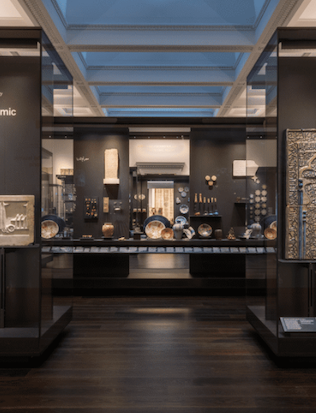The Albukhary Foundation Gallery of the Islamic World
The British Museum is a treasure trove of Islamic art and artefacts. Its collections of Moghul, Mamluk and Safavid metalwork are unparalleled, while its many early manuscript pages from the Qur’an include some of the most wrenchingly vivid sheets of calligraphy to have survived from the centuries that first witnessed the rise of a powerful new faith preached by the followers of a man called Prophet Mohammed. One of these pages in particular has fascinated me ever since I first saw it some thirty or forty years ago, even though I lack the language to read it. Inscribed in kufic by a Syrian scribe in the ninth or tenth centuries, it vibrates with spiritual conviction: the characters are ranked in a phalanx of forms, each holy word resembling (to my eye at least) an ink-black chariot of war on a parchment field of battle.
The museum also houses a number of astonishingly intricate examples of Iznik ceramic ware, including a mosque lamp from the mid-sixteenth-century refurbishment of the Dome of the Rock bequeathed by former trustee Charles Drury Edward Fortnum (1820-99), who is better known today as a founder of Fortnum and Mason’s food emporium than as a collector. That object is itself a fine complement to the matchless group of some six hundred pieces of Islamic pottery that once formed part of the collection of Frederick Du Cane Godman (1834-1919), a connoisseur and ornithologist persuaded on to the board of the British Museum by the tireless Sir Augustus Wollaston Franks (1826-1897), who was one of the first Keepers to press for the acquisition of Islamic objects – so much so that he has sometimes been dubbed the “second founder” of the museum. As Franks would have hoped, Godman’s collection of...


